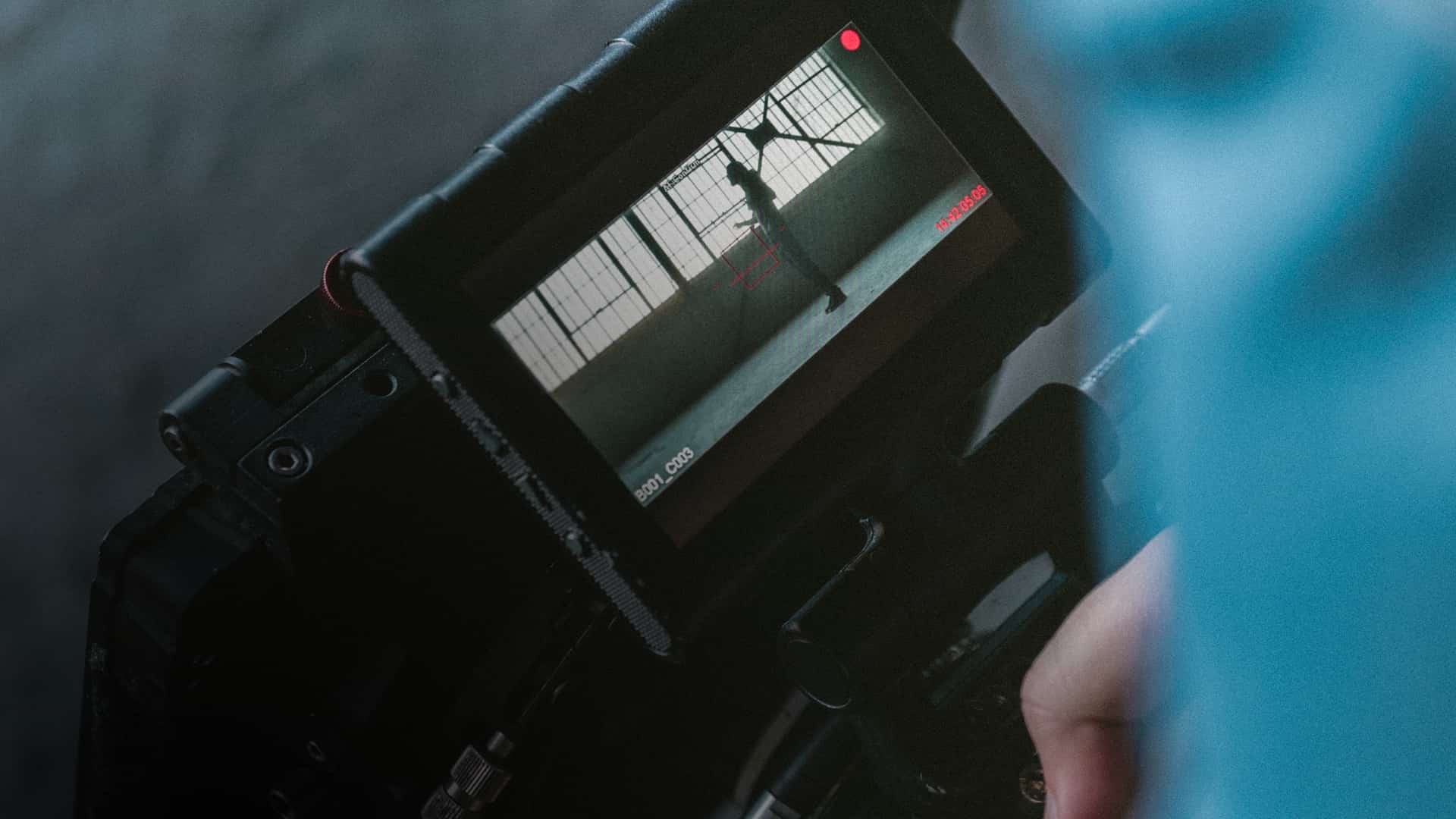The best photographers and cinematographers use depth of field knowledge for precise control over their images.
Establishing your own visual style should occur before you step on set, and it begins with understanding how to control your depth of field.
In this ultimate guide to depth of field, we'll:
- Explain the forces that govern DOF.
- Provide you with a practical definition of DOF.
- Illustrate how DOF can elicit emotion (with modern examples).
Next time you shoot, you’ll have precise control over your images.
Scene with varying dof from Memoirs of a Geisha (Rob Marshall)
Let's jump in.
DEPTH OF FIELD DEFINITION
What is depth of field?
Depth of field (DOF) is the term used to describe the size of the area in your image where objects appear acceptably sharp. The area in question is known as the field, and the size (in z-space) of that area is the depth of that field. DOF is governed by the angle at which light rays enter the lens.
The larger your camera sensor, the more your depth of field decreases. This is because you are forced to move closer to your subject to fill your frame. You can manipulate your DOF through aperture, and focus distance.
The center most point of the field is known as the point of focus. The imaginary two dimensional plane that extends from that point is known as the plane of focus.
Any part of your image that falls directly on this plane is officially in focus.
Depth of field is a spectrum and provides a number of variations that bring different effects to different shots. It produces many types of camera focus in film. For a complete breakdown of these options, watch our episode of The Shot List that is dedicated to depth of field and camera focus.
Ultimate Guide to Depth of Field • Subscribe on YouTube
Now that we have a general understanding of depth of field and the various types of a camera focus involved, let's talk specifics. How does depth of field actually work? Here's a quick graphic to get us started.
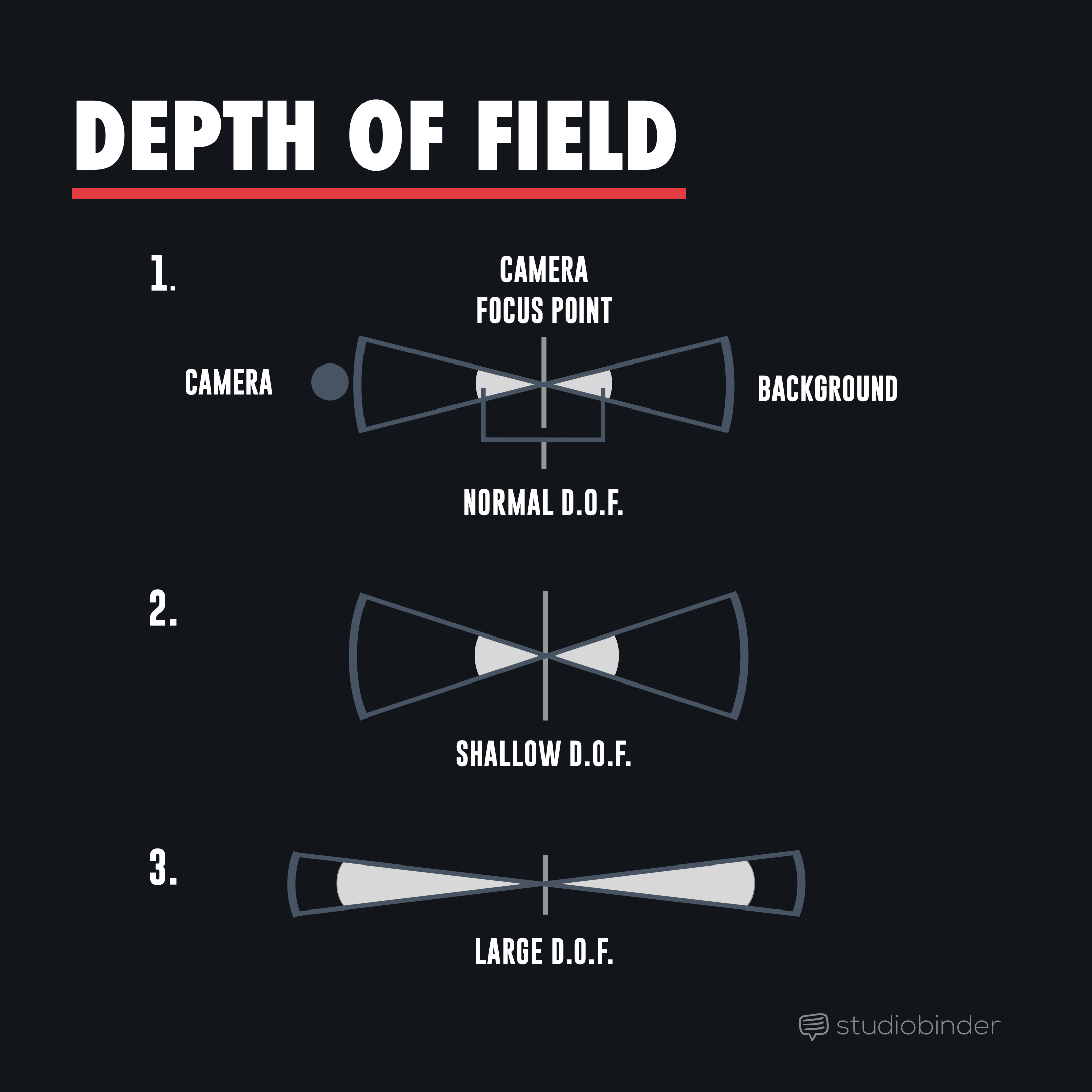
What does DOF look like?
Humans take in visual information along three axes:
X - Width
Y - Height
Z - Depth
For instance, the dimensions of your smartphone (held vertically) might be...
X - 2.64 inches (Wide)
Y - 5.44 inches (Tall)
Z - 0.28 inches (Deep)
Depth lives along the z-axis, and this is commonly referred to as z-space. So the depth of your phone when held vertically, based on the figures above, would be…
0.28 inches.
UNDERSTANDING DEPTH OF FIELD
Let's break down depth of field...
You have a hallway of infinite depth.
Walk forward and place a door at the 20 ft mark.
Continue deeper into the hallway and place another door at the 50 ft mark
The area in z-space between these two doors is know as your field.
The distance between these two doors is the depth of your field.
The area (field) is the physical space.
The distance (depth) is the measurement of that space.
In the example above...
Our first door is placed at the 20 ft mark.
Our second door is placed at the 50 ft mark.
Therefore, your DOF is…
30 ft
Leave your first door placed at the 20 ft mark.
Move your second door to the 90 ft mark.
Now, your DOF is…
70 ft
In each instance, you have a field, but the depth of that field is determined by how much space is between each door.
Objects that falls in between those doors would be acceptably sharp, and any objects that falls outside of those doors would not.
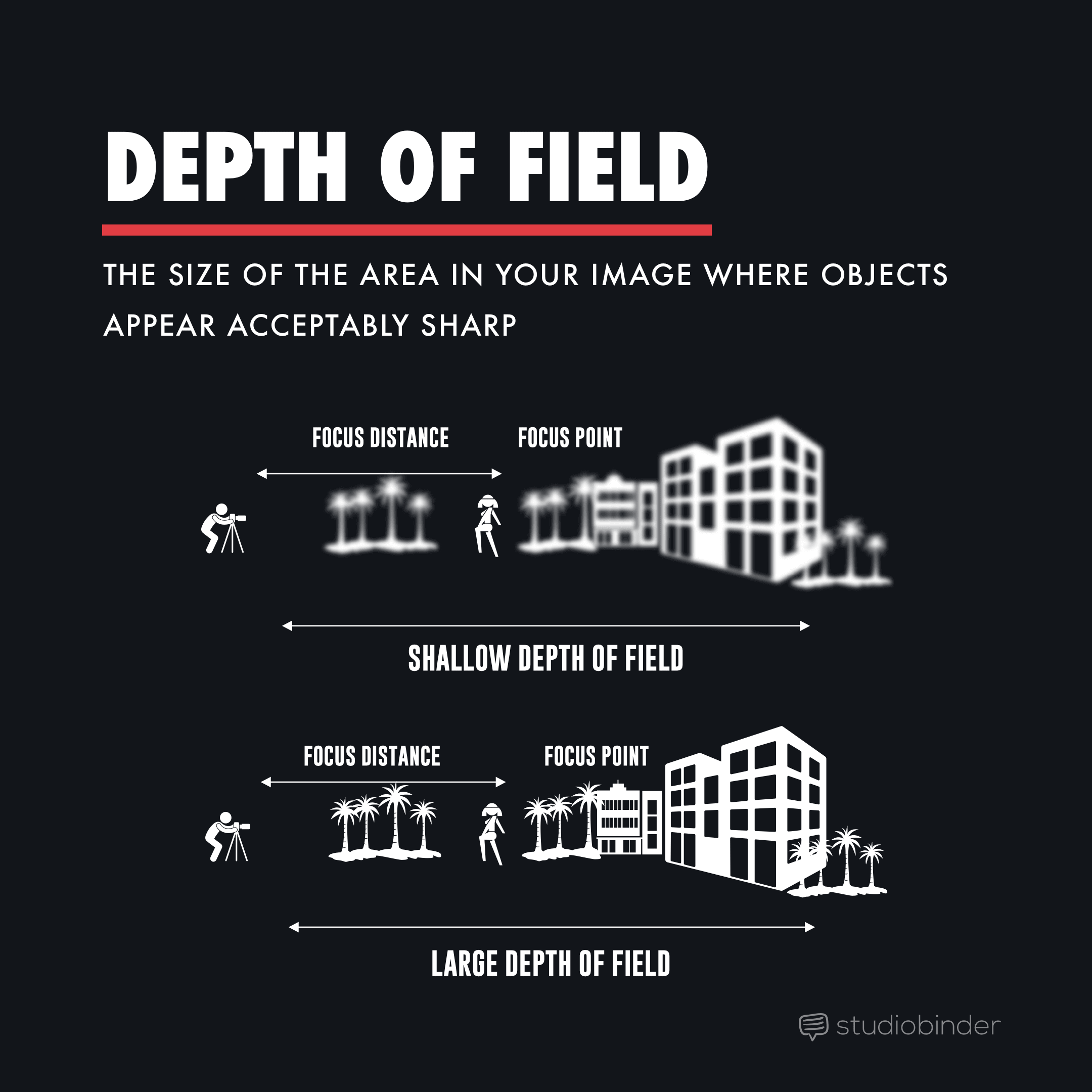
DOF diagram
Need another one?
You have 3 empty drinking glasses on a table in front of you:
A shot glass
A whisky glass
A pint glass
Pick up the shot glass. Look inside until you see the bottom. Very shallow.
Pick up the whisky glass. Look inside until you see the bottom. In the middle.
Pick up the pint glass. Look inside until you see the bottom. Very deep.
Now imagine if only the depth of your glass was in focus.
That represents your field. The depth of your glass is the depth of your field.
One more...
The video below uses toothpaste for the metaphor.
The more you squish the tube, the more it spreads the toothpaste.
Toothpaste = Your Field.
Depth of Field - Video courtesy Dylan Bennett
Related Posts
DEPTH OF FIELD: CIRCLE OF CONFUSION
What is the circle of confusion?
The circle of confusion is the measurement of a point source of film light that falls on the focal plane. The diameter of this circle is measured by fractions of millimeters. This light is never truly in focus, which is why size of the circle of confusion is used to determine the quality of a lens. The smallest circle a lens can generate (circle of least confusion) registers a light source in “perfect focus.”
This is used to measure lens precision. Once you’ve calculated the circle of confusion, you can then accurately determine how precise the focus of your lens will be, and paired with the focal length, you can determine the hyperfocal distance of a particular lens.
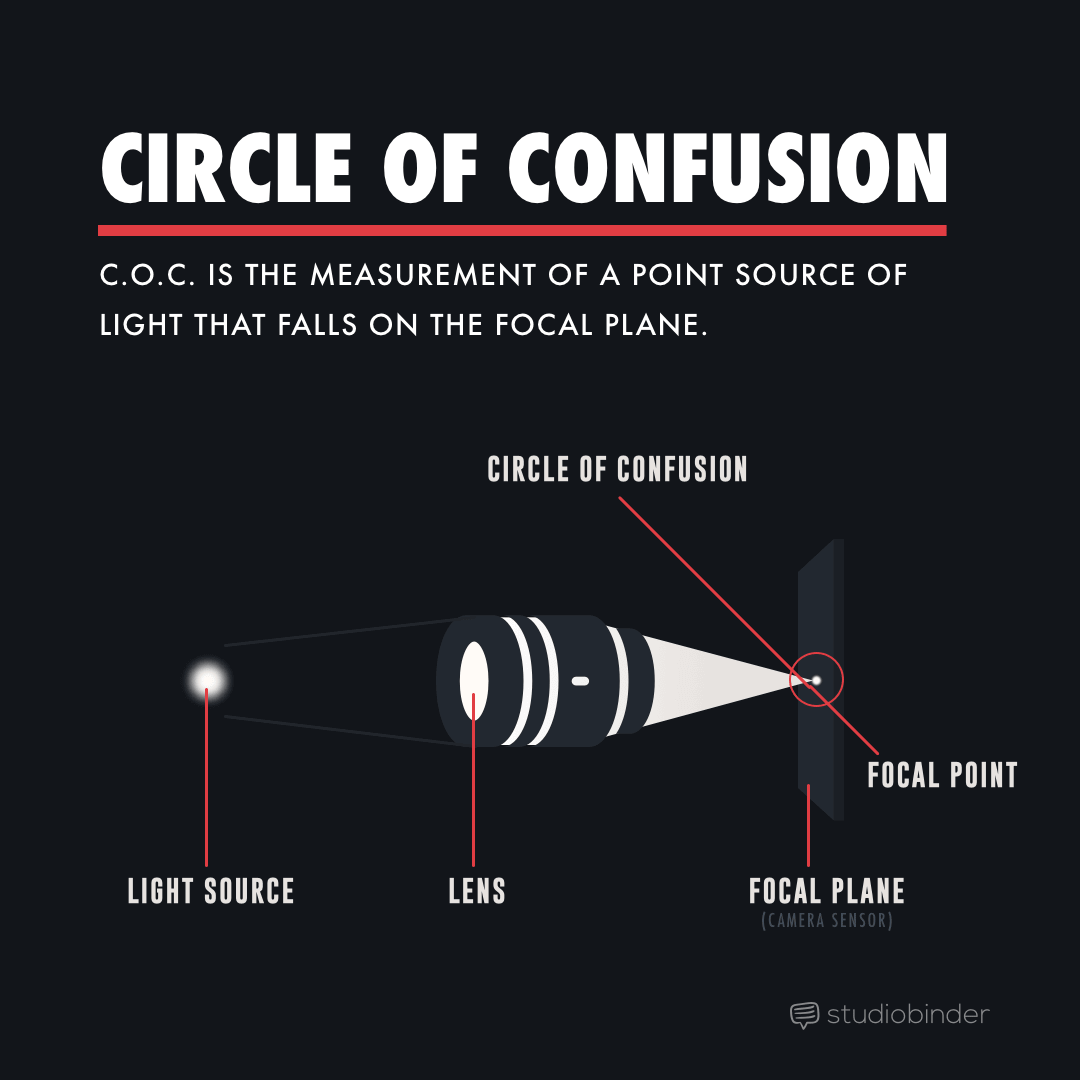
Circle of confusion depth of field example
Testing the circle of confusion is a very useful method for lens and camera manufacturers to test focus, because it helps determine when as subject is officially out of focus.
It also is a really good way of establishing the value of a lens and its construction, because the smaller the circle of least confusion is, the more precise (possibly expensive) your lens will be.
Generally:
More expensive lens = Smaller circle of least confusion
Circle of confusion explained - Video courtesy Adorama
SHALLOW DEPTH OF FIELD
What does shallow depth of field actually do?
Shallow depth of field is the term used to describe an image that has a shorter field distance. Therefore the region of acceptable sharpness is smaller, and has a higher drop-off rate.
A shallow DOF can isolate your subject and cloud surrounding objects.
This allows a director to elicit several different emotions from the viewer. Some of these include severity, loneliness, fear, doubt, extreme beauty, heightened senses, and anger.
Regardless of the feeling you want to generate, you should make it a point to plan out and make a shot list with the intended depth of field for each shot.
You can do this by simply checking the box for DOF on your shot list, and you can mark shallow depth of field, or mark it deep if you need to see imagery that is further back in the frame.
StudioBinder Shot List | DOF
A shallow depth of field may help with the emotional tone of your image, but it will rarely take you as far as most cinematographers need.
Some of the most beautiful shots have used a shallow depth of field, as well as some of the most disturbing shots (still beautiful in their own way).
You need to use subject matter, performance, lighting, color, and camera movement to help with the rest of the journey.
SHALLOW DEPTH OF FIELD EXAMPLE:
Here's one example of a shallow DOF being used in modern television.
Shallow Depth of Field Example
Here you see some images that have a very shallow DOF. You'll notice how this focuses your attention to specific areas of the image, and has the ability to elicit desired emotions from the viewer.
These emotions can be amplified by lighting and color.
In The Night Of, the shallow depth of field not only creates an eerie tone, but it also plays into the detective aspect of the story.
You are literally looking for evidence in the frame.
DEEP DEPTH OF FIELD
So what is a large depth of field?
Large depth of field is the term used to describe an image that has a deeper field, therefore the region of acceptable sharpness has a lower drop-off rate. This can be used to capture a larger area of acceptably sharp images.
This can also be referred to as a deep depth of field, and some cinematographers will simply use the term “depth” to describe shots with a large DOF. It can also be referred to as deep focus.
DEPTH OF FIELD IN CAMERAS
What governs depth of field?
There are various ways to control you depth of field. Each method has a profound impact on the area of acceptable focus, but combining multiple methods will allow incredible control over your images.
Here are some ways to govern DOF:
SENSOR SIZE
The larger your camera sensor, the more your depth of field decreases. This is because you are forced to move closer to your subject to fill your frame.
That doesn't mean you should buy a camera because it has a smaller sensor, but it is something to keep in mind with regard to governance.
APERTURE
Aperture describes the light intensity of a specific image or set of images based on the amount of light that was allowed to pass through to the sensor or film. This is measured by F-Stops (Estimated) and T-Stops (Exact).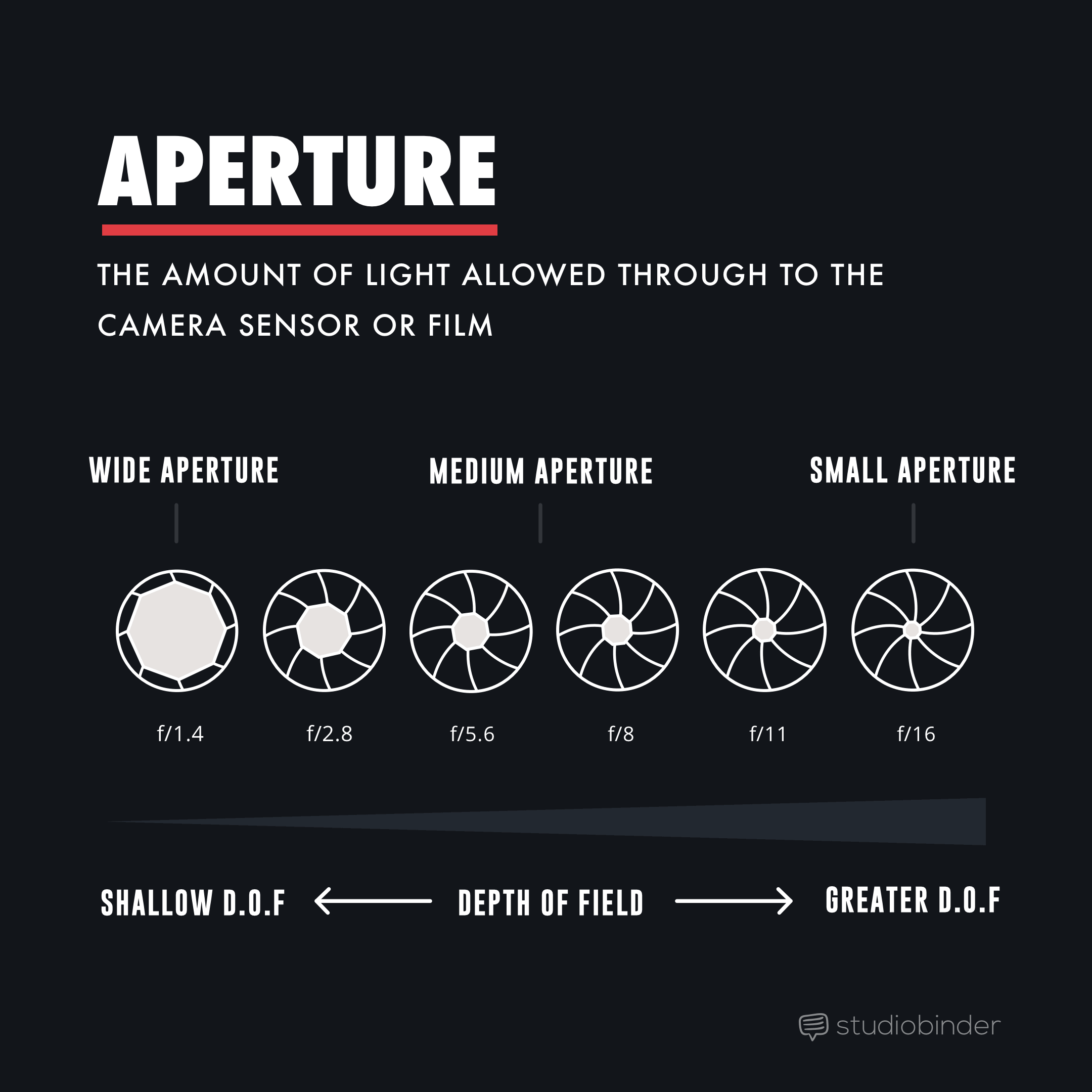
DOF change via aperture
Related Posts
Note: The lower the f stop number, the higher the aperture.
When you increase the diameter of your aperture, you physically change the angle at which light rays may enter the lens.
This spreads the angle to make it wider, which squishes your field closer together, and thus creates a shallower depth of field.
When you decrease the diameter of your aperture, you physically change the angle at which light rays may enter the lens.
This squishes the angle to make it thinner, which spreads your field further apart, and thus creates a larger depth of field.
What is Aperture? • Subscribe on YouTube
FOCUS DISTANCE
When you get very near a subject you will notice that your depth of field becomes more shallow. This happens regardless of the focal length of your lens.
It is a myth that longer lenses give you a shallower depth of field.
If you were to put a longer lens on your camera, it would magnify your subject, and this creates the same depth of field you would get with a wide lens very near the subject. This is why longer lenses appear to give you shallower DOF.
You aren’t actually changing the depth of field by putting a longer lens on your camera, but rather moving your camera closer (without having to get any closer).
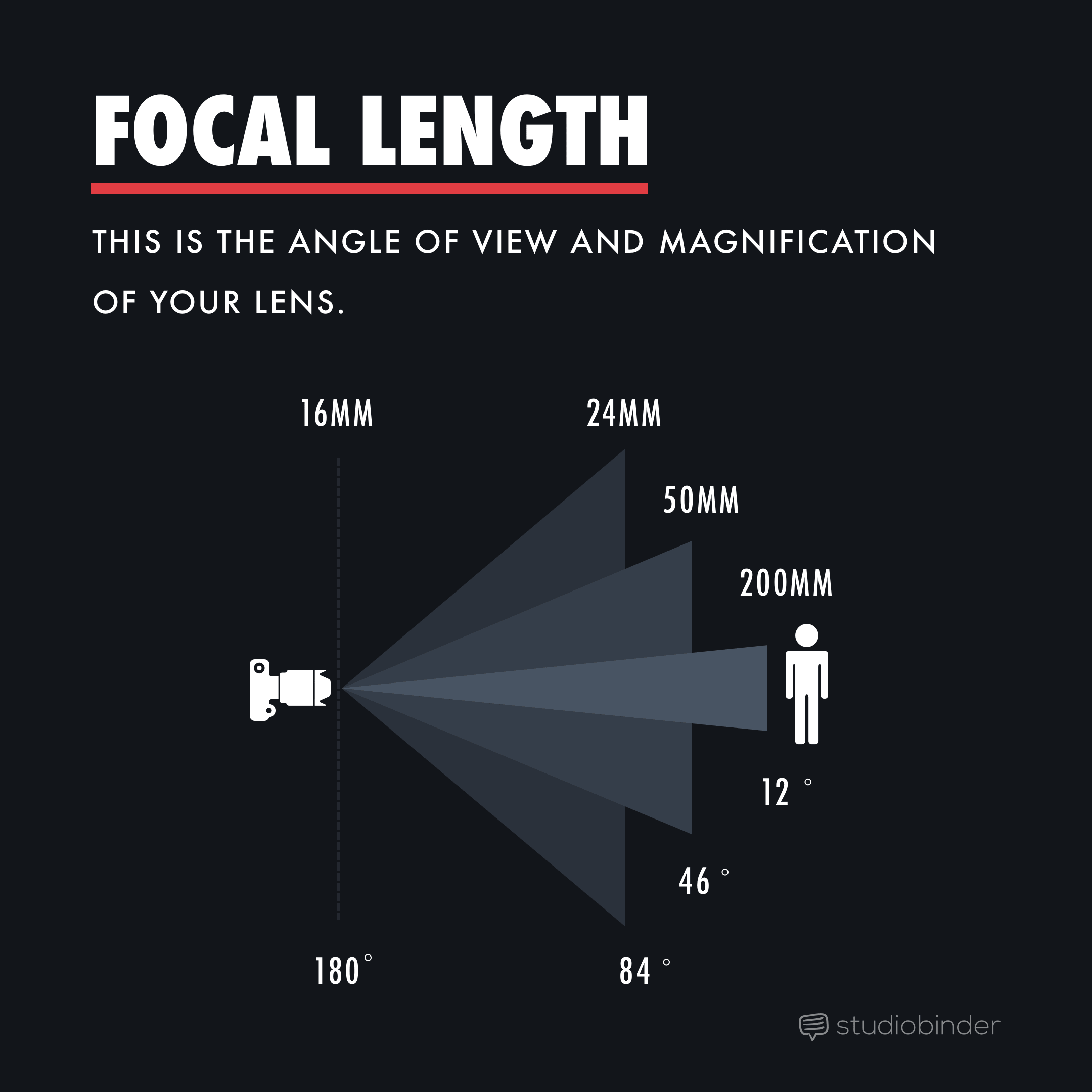
Depth of field | focal length
If your subject takes up the same amount of space in the frame, you will have the same depth of field regardless of focal length.
The magnification of the lens not only simulates being closer to the subject, but it also magnifies the actual blurring effect in the unfocused parts of the image.
Focal length examples
CAMERA DISTANCE
The physical distance of camera-to-subject changes your depth of field for the same reasons as your aperture and focal length.
Camera distance can also be referred to as focus distance, because as you move your camera, you are forced to change the position of the focal element within the body of the lens to keep your subject in focus.
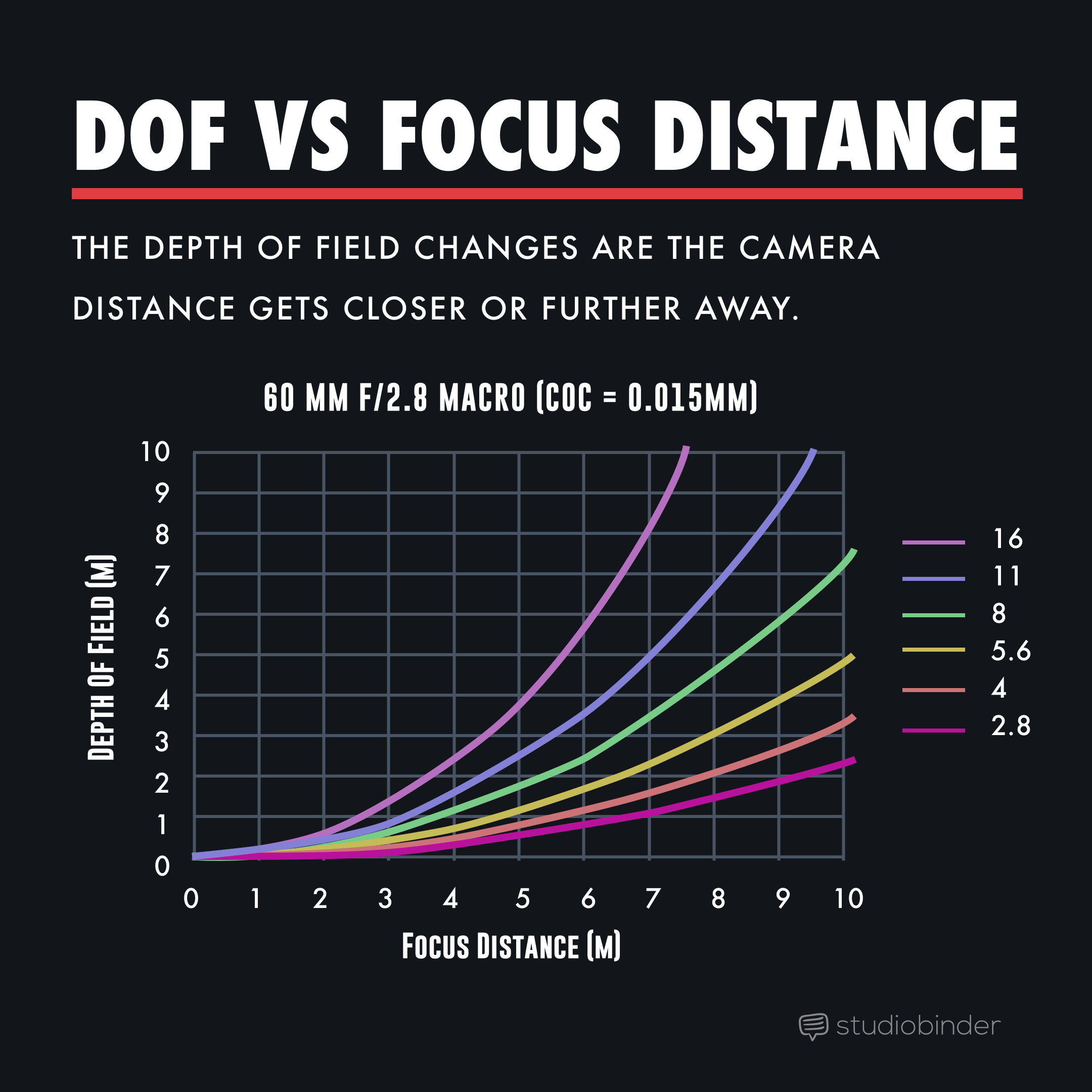
Depth of field change via camera distance (focus distance)
Camera distance and depth of field - Video courtesy Mike Browne
LENS FILTERS
Lens filters can help you control your depth of field in specific instances. This is most useful in those rare moments when you have too much light, but you don’t want to stop down.
If you are planning on shooting a scene in particularly harsh, bright light, but you still want to get an image with a shallow depth of field, consider using a neutral-density filter to decrease the light intensity.
This will help you keep images appropriately exposed despite having the relatively wide aperture that gives you the shallow look you desire.
Neutral density filters don’t change the angle at which light rays enter the lens. They simply reflect a small amount of light so that your exposure is lowered.
ND filters do not affect color, and can help reduce reflection in your images.
ND filter for DOF explained
Combine the forces that govern depth of field to achieve some really spectacular results. If you’re a cinematographer, you need to understand each of these forces more than anyone on set.
If you’re a director, you always want to understand as much as possible with regard to creative decisions, including depth of field.
Howard Hawks, Patty Jenkins, John Waters; all directors with unique styles and tone. Each have profound control over the depth of field in their images.
While it doesn't related directly with depth of field; it's still critical to understand what achromatic lenses are.
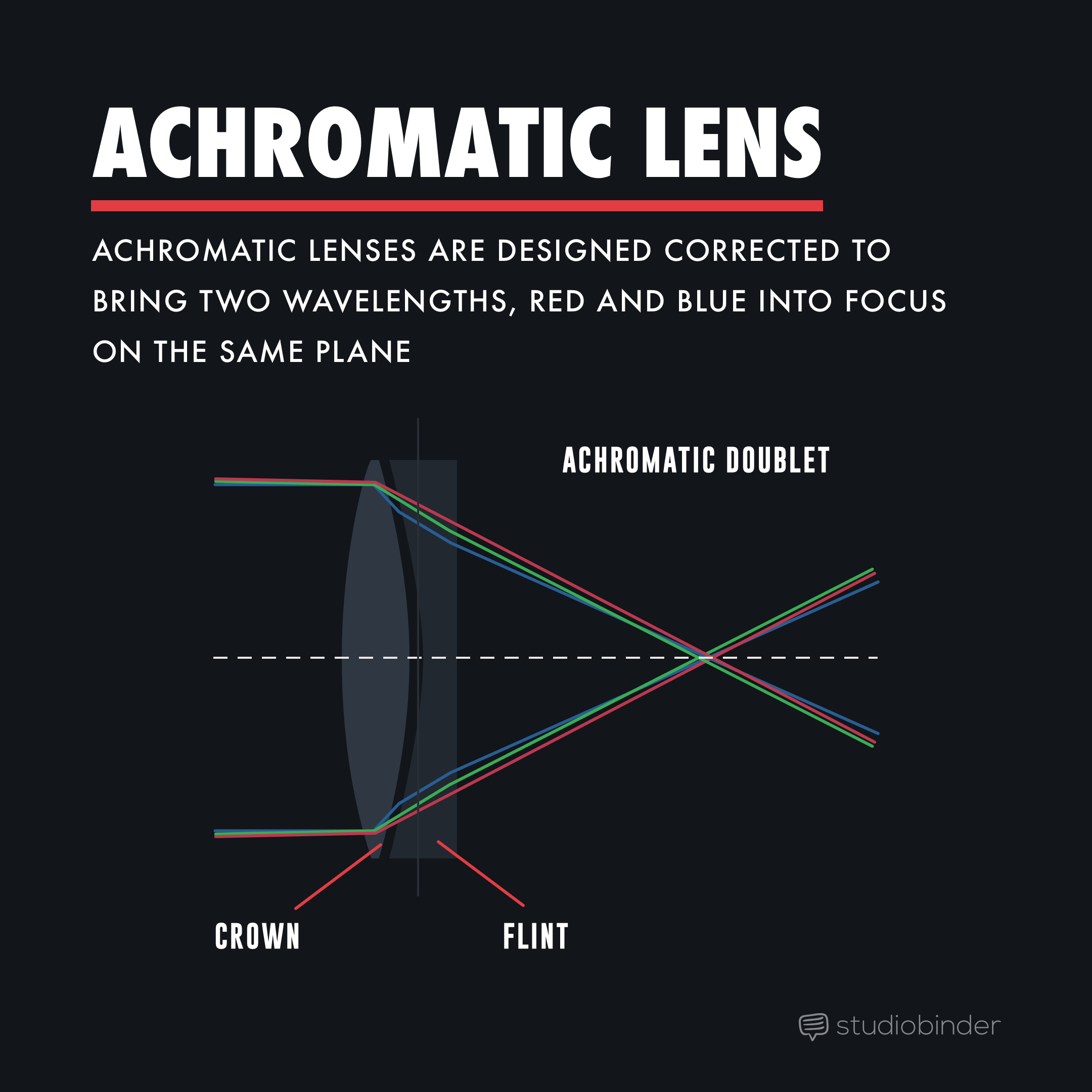
Achromatic lenses
Related Posts
DEPTH OF FIELD: SELECTIVE FOCUS
Blur anything and everything
Selective focus is a technique where a photographer or filmmaker uses an extremely shallow depth of field to isolate a subject.
This heavily blurs the background and foreground to such an extreme level that the surrounding is completely obscured.
Selective focus explained - Video courtesy Adorama
So, whenever an extremely shallow depth of field is used to capture an image, selective focus is at work. An large amount of light is often needed to achieve selective focus, so keep that in mind.
DEPTH OF FIELD CALCULATOR
Depth of field for long takes...
If you're going to be filming a long take in your next project, you may want to keep your depth of field as large as you can. Based on the knowledge you just picked up, you may have already determined how you would film a long take.
For instance, if you are attempting to film a shot like the one in the video below, you'll want to stay wide, but you also keep a large depth of field.
Copacabana Scene - GOODFELLAS - Martin Scorsese & Michael Ballhaus
At the very beginning when Henry hands the car keys off to his friend, you'll notice the depth is more shallow. Why? Because the subject was closer to the camera, but as they move through the scene they remain in focus.
They weren't changing lenses or settings, but they used their actors and blocking to create a shot with different layers of depth of field, and achieved a really amazing shot that both isolated information, but also stayed in focus.
Consider calculating your depth of field beforehand if you know you're going to film a long take. This may help you pull off some difficult goals.
Depth of Field Equation - Video courtesy Orlando Martos
Up Next
How to Make a Shot List
Ready to capture some seriously cinematic images? Check out this article on How to Make a Shot List Using StudioBinder Software. We show you how to add custom description (like depth of field) to each shot so that you can be as precise with your shots as possible. Take the skills you learned in this article and create something spectacular. Have questions or comments? Have a link that shows off your DOF skills?
Up Next: How to Make a Shot List →
Showcase your vision with elegant shot lists and storyboards.
Create robust and customizable shot lists. Upload images to make storyboards and slideshows.
